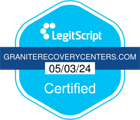- Written By Granite Recovery Centers
- Clinically Reviewed By Cheryl Smith MS,MLADC
Understanding Heroin Addiction
The heroin and prescription opioid epidemic has been a massive problem in the United States for nearly two decades. Although you’d expect the number of people becoming addicted to decrease as the crisis continues, that’s not the case. Each year, hundreds of thousands of Americans struggle with an addiction to heroin. With the new dangers of fentanyl, a drug much stronger than heroin, it’s important to know how a heroin addiction develops and how to get help.
There is a wide range of reasons why people begin abusing drugs in the first place, and it’s crucial to know the risk factors. Nobody wakes up one day with the intention of becoming addicted to heroin, so it’s important to understand how it happens. The process of developing a full-blown addiction can take months or years. This is why it’s also important to understand that the treatment process also takes time, but it can lead to long-term recovery and regaining control over your life.
Why Do People Abuse Drugs?
Before knowing about the signs and symptoms of heroin addiction, you should know the different reasons people begin abusing drugs. It can simply start with discomfort over dealing with the human experience. Each of us deals with stresses, tragedies and emotions that we don’t want to manage, and many people don’t know how to manage them at all.
There is also a wide range of risk factors for developing an addiction, but the factor that makes people the most vulnerable is having a mental illness. Although the United States puts a major emphasis on maintaining and developing physical health, there’s not nearly enough attention when it comes to mental health. In fact, most people don’t even know the signs and symptoms of mental illness. Without knowing what to look for, people often go undiagnosed, and all they know is that they’re dealing with thoughts and emotions that they don’t understand. Due to this state of confusion and being scared, people often turn to drugs as a way to find a sense of relief.
The problem with self-medicating with drugs as a way to cope with symptoms of mental illness is twofold. The first issue is that turning to substances makes you develop a dependency. Your brain starts to associate drugs with calming down your symptoms of mental illness, so you begin to believe this is the only way to battle symptoms of depression, anxiety, trauma or another disorder. The other problem is that although drugs offer short-term relief, they can actually intensify your symptoms of mental illness and make things much worse.
The other primary risk factor for addiction is when you have a genetic predisposition. All of our brains send out dopamine when we experience pleasure, but those who are predisposed to addiction get a flood of this pleasure-inducing neurotransmitter. This is one of the reasons why some people become addicted from day one and others don’t. While many people can receive prescription opioids and take them as prescribed, others get an intense flood of dopamine, which creates a high that the person begins chasing.
How a Heroin Addiction Begins
Everyone knows that heroin is an extremely dangerous drug, so why do people turn to it in the first place? Well, for most people, heroin wasn’t their original drug of choice. Turning to heroin is often what people do when they need a stronger high or can’t afford their original drug of choice: prescription opioids.
In the early 2000s, there was a massive marketing campaign for the drug Oxycontin. It was marketed as a pain medication that could not only stop pain but was also supposed to be nonaddictive. Doctors began prescribing Oxycontin left and right, and it didn’t take long for people to develop addictions.
Doctors have since tried being more careful when it comes to prescribing prescription opioids and opiates, but people are still taking advantage of the system. It’s also important to note that there are other prescription opioids, including Vicodin, Percocet, codeine, and morphine.
These medications are often prescribed with good intentions, but they can be highly addictive. For those who have a genetic predisposition to addiction, they may get hooked from day one. Although genetics is a risk factor, the reality is that most people develop an addiction to these drugs due to long-term use. Eventually, the person begins to gain tolerance for the medications, which means they need more of the drug in order to manage their pain. They also develop a physical dependence, so if they stop taking the medication, they experience symptoms of withdrawal.
In order to prevent a potential heroin addiction, it’s important to spot the signs and symptoms of prescription drug abuse. The first sign is when a person begins to run out of the drug sooner than they should because this means they’re taking more than prescribed. In some cases, a person begins abusing these medications by mixing them with other substances, like alcohol, to get a more intense high. There comes a point when the person’s substance abuse results in their primary doctor no longer giving them refills, so a person will begin seeking out other doctors. After that, the person may start stealing medications from friends and family members, or they may start buying the drug illegally on the street.
The Signs and Symptoms of a Heroin Addiction
Once a person gets to the point where they’re buying these medications illegally, it can cause a variety of issues in their life. These medications aren’t cheap when you buy them on the street. If a person has an addiction to these medications, they can start spending hundreds of dollars in a single day getting these pills. While many people want to quit, they can’t because of physical dependency. The physical need for the drug in order to feel well can result in a person stealing from friends and family.
Unfortunately, addiction starts to make a person desperate. Many people say, “I would never try heroin,” but once you’re addicted and you have a dependence, heroin starts to become a viable option. Heroin is much stronger than most prescription opioids, and it’s much cheaper to buy from drug dealers compared to pills.
There’s a common misconception that people who are addicted to heroin primarily shoot the drug up intravenously, but this often doesn’t happen until later. This is a crucial piece of information if you’re trying to spot the signs and symptoms of heroin addiction in a loved one. Many people begin using heroin by smoking the drug or snorting it. If a person is smoking the drug, you should keep an eye out for pieces of burnt tinfoil, which is used during the smoking process. If a person is snorting heroin, you should look for signs of irritation around the nose as well as a person constantly sniffing or rubbing their nose.
People snort heroin because it gets into the bloodstream quicker, but they’ll start shooting the drug intravenously for an even quicker high. When a person starts shooting the drug, they’ll often develop track marks. A person usually begins shooting the drug into their arms, so you should keep an eye out for track marks. Sometimes a person will cover track marks up, so if they’re wearing long sleeves a lot, it may also be a sign.
Eventually, veins in the arm begin to be unusable to the person, so they’ll start shooting up in other places like their neck or feet. Sometimes, people begin shooting up in other parts of the body immediately as a way to hide their signs of use.
If you’re concerned that a loved one might be addicted to heroin, you should also look for the psychological and social signs. Those who develop an addiction to heroin will begin to become more withdrawn from the people in their lives, which can lead to isolating and sometimes sleeping a lot. Due to heroin metabolizing so quickly and the person experiencing symptoms of withdrawal, you’ll see massive mood swings. While high, the person may be extremely laid-back and sometimes overly affectionate. When they run out of the drug or start to come down, though, they can become extremely erratic with their emotions.
How to Get Help for a Heroin Addiction
If you or a loved one is showing the signs and symptoms of heroin addiction, help is available. The first part of the treatment process is going through a medical detox program. One of the biggest mistakes a person can make is trying to quit cold turkey. The symptoms of withdrawal are extremely harsh psychologically as well as physically. In more severe cases, heroin withdrawal can be potentially fatal, and this is why you should always go through a medical detox program that’s run by qualified professionals.
When you enter the detox portion of treatment, you’ll go through a psychological and physical evaluation. This helps create an individualized course for detox. You may be put on medications to help keep your heart rate and blood pressure under control, and there are also medications that can handle the depression and anxiety associated with withdrawal.
Although there are many holistic methods that can be used for heroin withdrawal, some people prefer to use the medication Suboxone. Withdrawal happens due to the opioid receptors in the brain becoming vacant, and this is how Suboxone helps. Suboxone occupies those receptors in the brain, and this helps reduce the symptoms of withdrawal. Suboxone isn’t a medication to be taken permanently, so it’s gradually tapered down.
Detox is just the beginning of the recovery process. Long-term recovery depends on going through a treatment program to help you learn how to live a new life free from drugs. In treatment, you’ll go through both individual and group therapy sessions.
In individual therapy, you’ll be able to open up with an addiction therapist about the different struggles you face that make you turn to drugs. A therapist will help you understand the root cause of your addiction, your triggers and more. From there, they can give you new coping skills to help avoid relapse. You’ll also go through group therapy, which is extremely helpful because people need a strong support group in order to achieve long-term sobriety. Group therapy also helps you see that you’re not alone in your struggles.
Finally, dual-diagnosis treatment is there to help anyone who struggles with symptoms of mental illness. Not only do various forms of mental illness lead to substance abuse, but the mental health disorder can also lead to relapse.
To avoid turning back to drugs, you need to be able to manage your symptoms of mental illness, and this is done in a variety of ways. Qualified treatment centers use evidence-based treatment methods such as cognitive behavioral therapy (CBT). You may also be prescribed non-narcotic antidepressants and anti-anxiety medications that can help decrease symptoms. Mood stabilizers can also be helpful.
The first step toward recovery is acknowledging that there’s a problem. As hopeless as you may feel, never forget that millions of people were once in your situation and learned how to live a life in recovery. Green Mountain Treatment Center and New Freedom Academy provide addiction treatment services in New Hampshire. As part of the Granite Recovery Centers network, these facilities offer various forms of therapy, including CBT and DBT, while also encouraging clients to attend 12-step programs. Both centers are located in quiet and picturesque parts of New Hampshire. This tranquility can help with the treatment process as patients learn to take back their lives from their addictions.
Going to treatment can sometimes be a difficult decision to make, but you’ll quickly see how it was the best choice of your life. If you’re ready to turn your life around and start on the path to recovery, contact Granite Recovery Centers today.

















